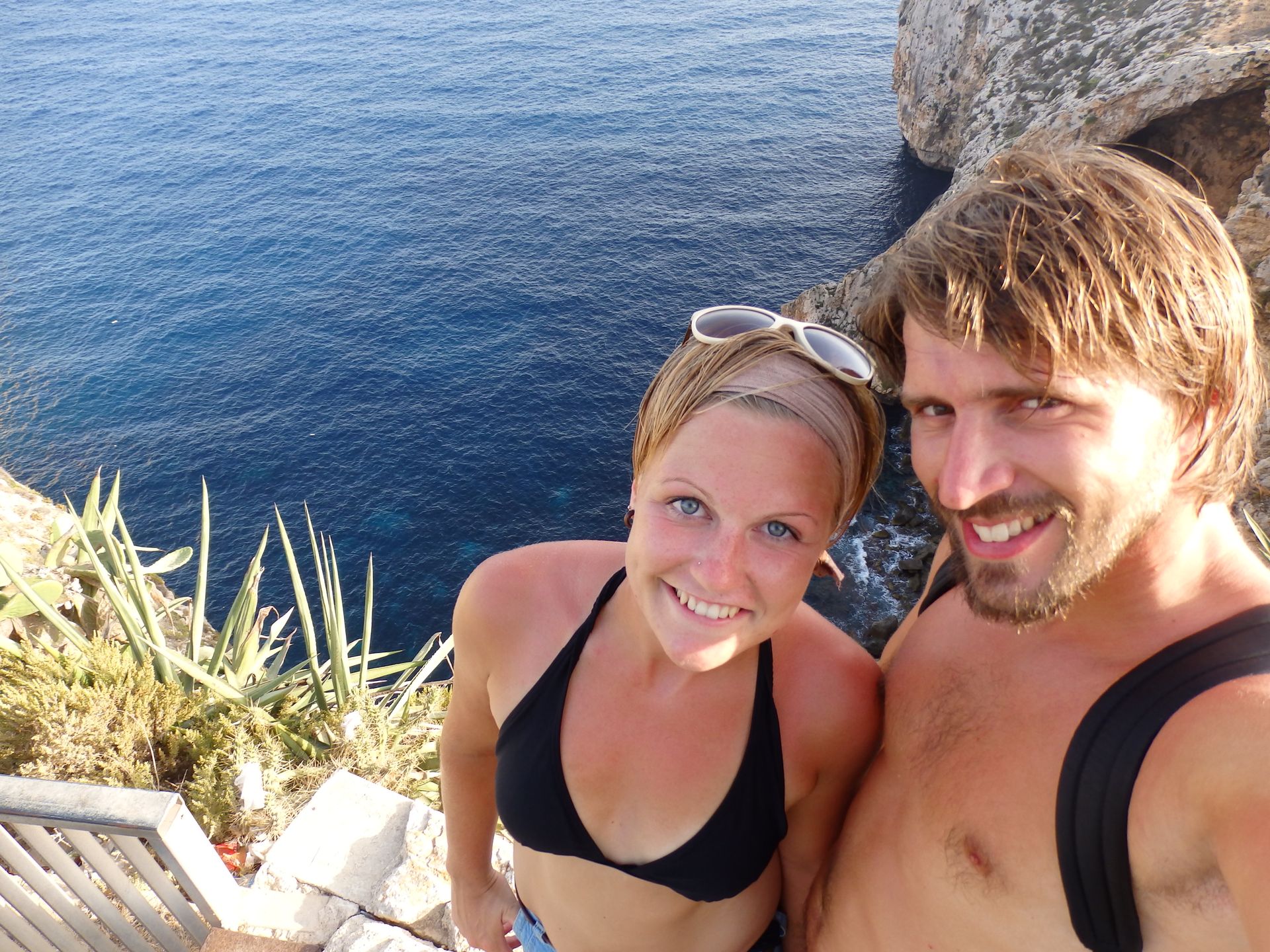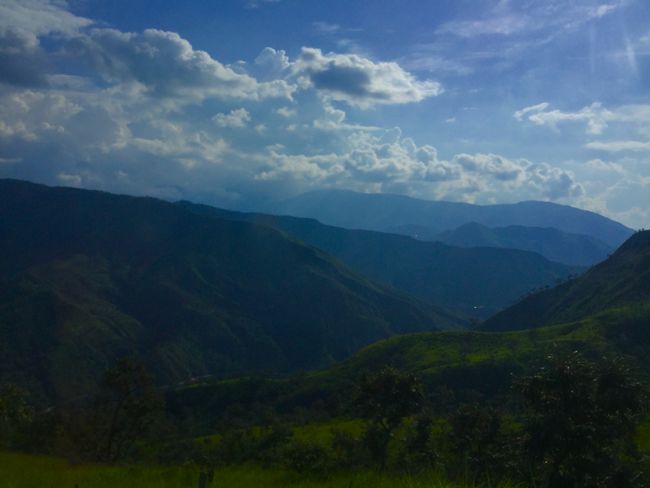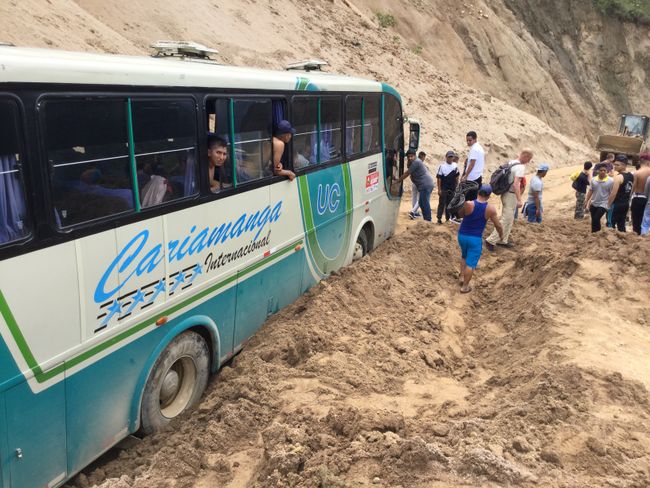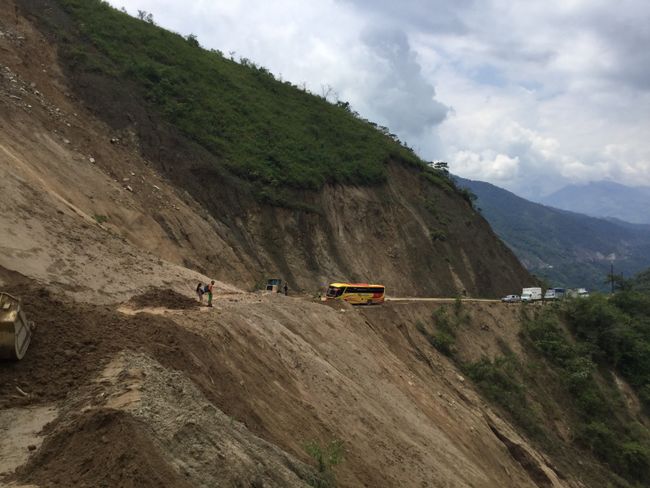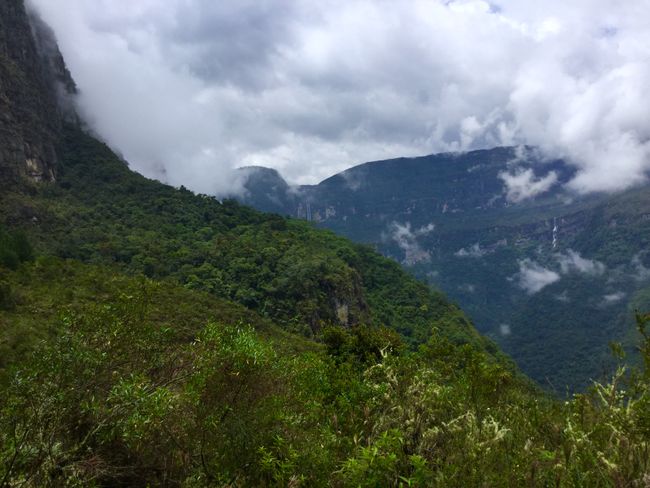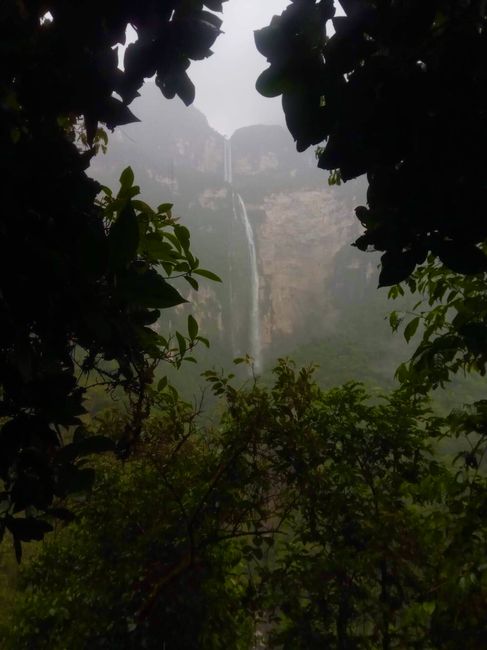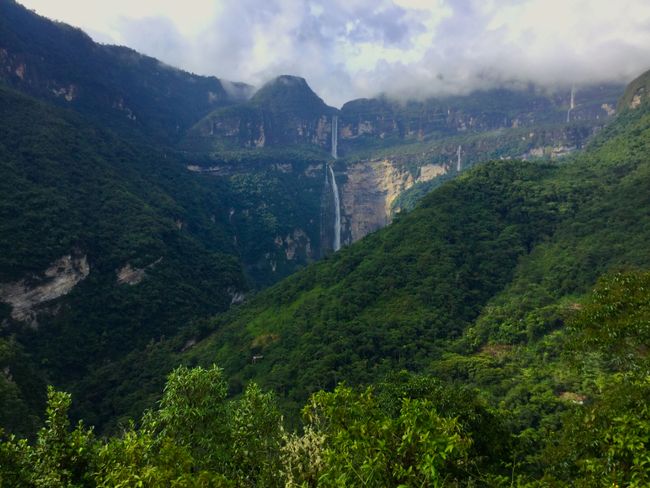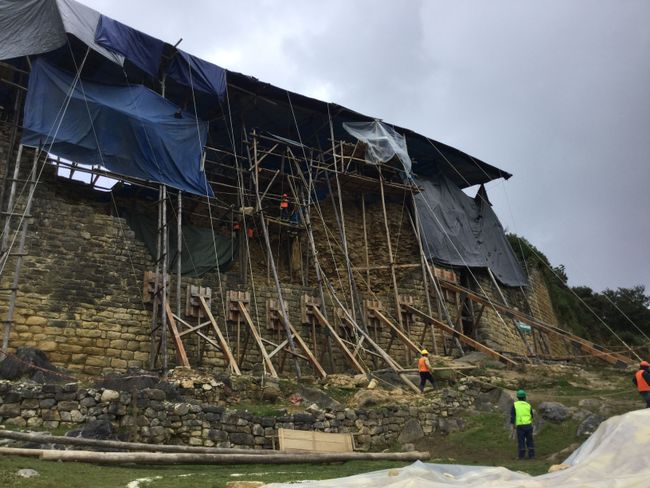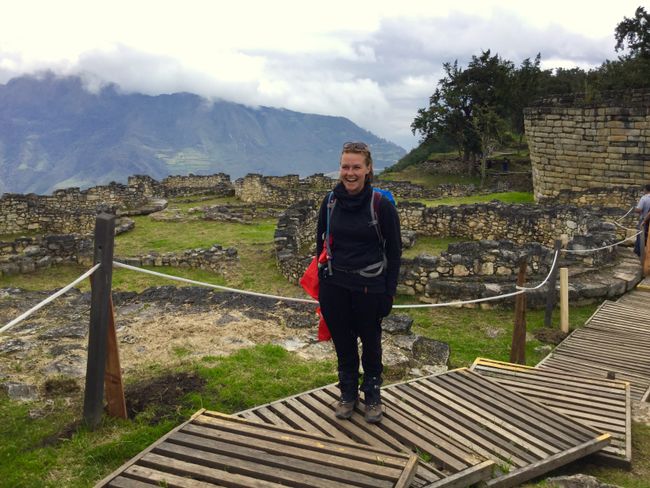Goodbye Ecuador - Hello Peru!
Publicatu: 03.03.2019
Abbonate à Newsletter
We originally planned to stay for only four weeks. However, unnoticed, those four weeks turned into eight....
We are glad to have started our journey here, with David and his family, who answered all our questions. We learned how life works here, how to ride buses and taxis, and I was able to improve my Spanish. As much as we would have loved to continue being cooked by Luki - it was time to move on. So, we headed to Peru!
We decided to take the inland border crossing, as the scenery is said to be more beautiful than the one on the coast (which we can now fully confirm, since we are now on the coast!). Beautiful, yes. But oh boy..., what an adventure! Due to heavy rain in the past weeks, the road, in the form of a dirt track, was heavily damaged, causing our bus to move very slowly. Slowly until just before reaching the border town of Zumba. There, an early morning landslide completely buried the road. A wheel loader did its best to make the road passable again - but our bus also had its problems with the "prepared" sandy track and needed four attempts to overcome the obstacle. After about two hours of waiting, we continued and (considering the circumstances and road conditions) made good progress. The border crossing was also smooth: show passport, stamp, done. After an eight-hour bus ride since Vilcabamba, we bought some beer and had a snack at the border post with our first Peruvian Soles. We still had another 5 hours bus ride ahead of us to the next city where we wanted to spend the night, exhausting, but no choice!
The next day, we continued to Chachapoyas, a small city on the edge of the Amazon, from where you can visit the fourth largest waterfall in the world, La Catarata Gocta, as well as the Kuélap ruins.
Unfortunately, the weather ruined our visit to the waterfall, it was pouring rain - we now know why the rainforest is called "rainforest"!! Nevertheless, it was an incredibly beautiful path amidst gnarled trees, from which flocks of excited chirping parrots fluttered, colorful beetles crawled around, and all kinds of butterflies fluttered alongside us. At the end of the path, which in the afternoon looked more like a small stream than a path, we were completely soaked but glad that we would soon return to the hostel and could take a nice hot shower!
In Kuelap, we had better luck with the weather the following day, only two small showers caught us, which didn't bother us, in memory of the previous day. Kuelap was built on a hill and was once a major city of the Chachapoya people, which resisted the Inca conquest for a long time. It was said that every Chachapoya should go there once to pray at the main temple, El Tintero, and make offerings, such as slaughtered llamas. Prayers were held on a platform on the top of the temple, which was hollow inside to drop the offerings into a hole made for that purpose. If a Chachapoya had not been able to pilgrimage to the city and make offerings during their lifetime, it was the duty of their descendants to bring some of their ancestor's bones to the temple, so that it would be easier for the ancestor to pilgrimage there in their next life. The ruins of the typical round houses with a flat cooking stone and built-in cabinets (in the form of stones omitted from the wall) and a stone corridor as a cave/cage for guinea pigs are still very well preserved in some parts, so archaeologists have considered the city "interesting" and literally took it apart stone by stone, resulting in many insights into life in the ancient metropolis. Very exciting for us! Also funny: the starting point for the ruin can be reached by the first gondola in Peru (otherwise about 8 hours hike), which the locals find absolutely delightful. Getting on the gondola was very exciting for everyone, they filmed the 20-minute ride to the top completely and took countless selfies to show the pictures to their friends. Lastly, the gondola attendant familiarized us with the emergency button, through which we could call the station. More exciting for the Peruvians than for us; we rather enjoyed the view from above of valleys, rivers, and footpaths winding their way up the slopes.
Abbonate à Newsletter
Rispondi

Rapporti di viaghju Peru
